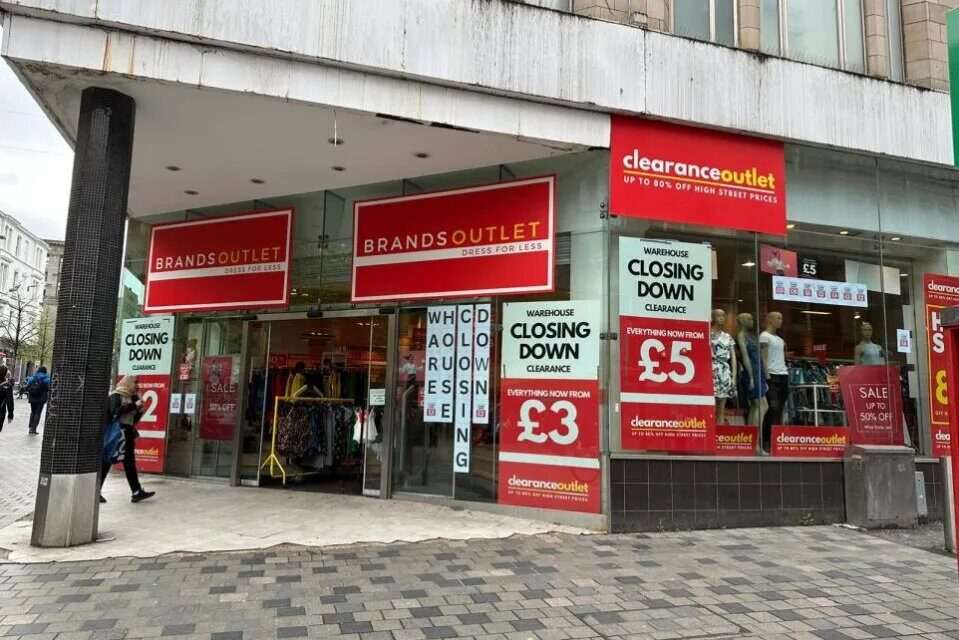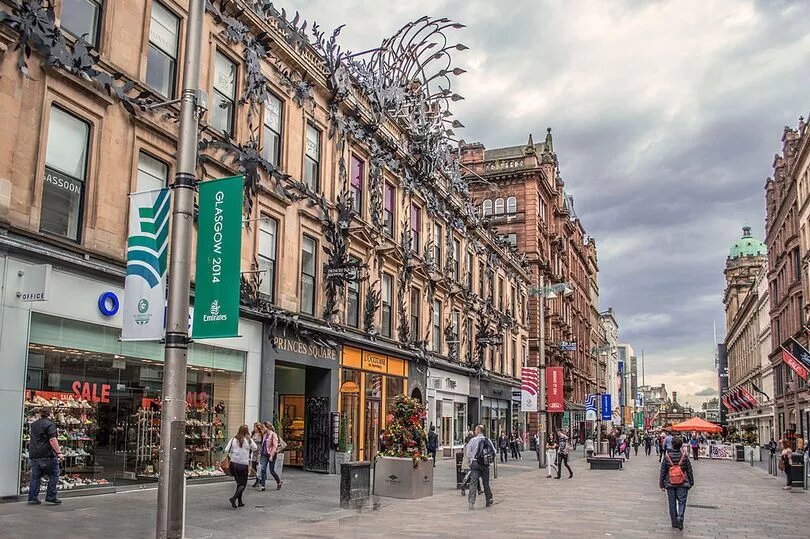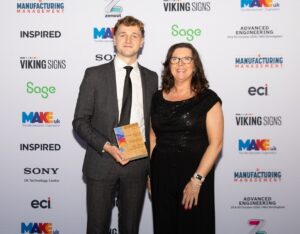
The retail sector in Glasgow has faced a number of challenges in recent years and yet again the future is looking gloomy due to the cost of living crisis.
The crisis has seen businesses battling with a significant rise in costs which has resulted in them making cut backs. This is especially difficult for those trying to ensure a steady cash flow coming out of the pandemic which was an incredibly difficult time for retail.
Post covid consumer behaviours have changed with many shoppers opting to buy online, now with the introduction of new Low Emission Zones in Glasgow, meaning consumers may be at risk of a fine should their vehicle not meet standards, it is not a promising future to an already struggling city centre.
People will look to get items locally if they can, giving them less reason to travel into the city centre. This has seen a significant impact already on consumer behaviour and puts businesses that rely on a strong amount of footfall at further risk of closing due to lack of business.
New data has show that the level of footfall in the city centre is well below what it once was as footfall in December 2022 was 15% lower than the same period in 2019. This is particularly shocking as the festive period is known to be one of the busiest periods in retail as people look to buy gifts for their family and friends.
After a difficult couple of years for the sector, retailers were not given the profitable Christmas they were hoping for.
While there have been signs that footfall has slightly increased in the first half of 2023, it’s not increased enough to have much of an impact. Recent data from the Scottish Retail Consortium (SRC) & KPMG has found that there has been a notable increase in footfall so far this year. Footfall in Scotland increased by 7.7% in April Year on Year (YoY) which was 4.3% points worse than March but better than the UK average increase of 5.3% (YoY)
Shopping Centre footfall increased by 5.5% in April (YoY) in Scotland, which is 2.9 points worse than March.
They also found when looking at the period between February 26th and April 1st 2023 found that total sales in Scotland increased by 8.8% compared with March 2022, when they had grown 35.6%. This was below the 3-month average increase of 9.0% and above the 12-month average growth of 7.6%. Adjusted for inflation, the year-on-year change was -0.1%.
Total sales in Scotland increased by 9.1 per cent compared with April 2022, when they had grown 15.3% but adjusted for inflation, the year-on-year growth was 0.3%.
Total food sales increased by 15.4% set against April last year, when they had increased by 2.9%. April was above the three-month average growth of 14.3% and the 12-month average growth of 9.9%.
Total non-food sales increased by 3.9% in April compared with April 2022, when they had increased by 25.7%. Adjusted for the estimated effect of online sales, total non-food sales increased by 2.5% in April against April 2022, when they had increased by 18.8%.

Ewan MacDonald Russell who is the Deputy Head of the SRC spoke to Business Connect saying: “I’d say on, if you look at the sales figures over the last four months, it’s been pretty flat but I say that with a caveat and huge caveat is with inflation.
Our real term sales figures have, have bounced around within a kind of decibel points, so sales have been very similar to last year.
What the big difference is, and what we’re worried about is we’re seeing this increase every month in food inflation and rising energy bills. The consequence to that is that customers have become very focused on only buying things when they really need them and of course is very difficult for some of the other sectors.”
David Lonsdale, Director of the SRC adds to Ewan’s comments saying: “Easter provided a slender but nonetheless welcome uplift to retail sales in Scotland last month. The real terms value of retail sales edged back into positive territory, after the decline witnessed in March, driven by health and beauty categories and as people spruced up their homes and gardens.
However, the figures reveal a continued and indeed more pronounced polarisation of performance between food and non-food categories. With households spending more on groceries due to elevated levels of inflation, the consequences of this can be seen with more discretionary spending areas losing out, with volumes declining.”
Paul Martin, UK head of retail at KPMG, commented: “As inflation continues to offset any true sales growth in Scotland, and the cost of living crisis continues to bite, the picture for the retail sector remains stagnant as we approach the summer months.
Some retailers are delivering growth and will be optimistic of their performance, although this is largely down to taking share from competitors through customer insights and innovation rather than any overall growth.
The challenge for retailers now is having to face into their own rising cost agenda, as inflation continues to challenge margins, whilst ensuring affordability, choice and value for customers.”
Another issue facing retail in Glasgow city centre is seeing formerly busy areas like Sauchiehall Street filled with buildings that are still boarded up after the businesses that occupied them were forced to close down. Recent analysis suggests that 36% of the shops, offices and domestic properties on Sauchiehall Street are currently lying vacant.
A notable example of this is the three storey BHS building which has been empty since closing in 2016.
Ewan MacDonald Russell told us how companies become more online based has played a factor.
He said: “The pandemic so accelerated something we knew was going to happen anyway; the rise of online businesses or the way that every retailer now was adapted to an omnichannel model where we’ve got stores using things like click and collect.
Retailers are still going to want to keep physical stores in a really attractive destination like Glasgow, where they know loads of shoppers are going to go. We know destination shopping will continue, that there is an experience about going to a great store, kind of finding the right items and doing that partly is a social thing.”

He added: “A trend we expect to see continue is businesses minimising the number of stores in the high street, focusing on one larger store and making it great. It’s all about where, where are the locations and giving customers good reasons to travel to them.
It’s going to open up space for independent or smaller stores to be able to get into retail units that were heavily priced before and now that there’s a bit less demand that might actually make it more affordable for a business.”
Stuart Patrick from the Glasgow Chamber of Commerce has commented in the past that he believe the downturn of the retail sector is not as bad as others think.
We asked Stuart to expand on these comments and he said: Retail will not disappear from the city centre. It is a fundamental part of the city centre and footfall has already recovered to around 90% of pre-pandemic levels.
Both investors and consumers say that retail will remain an important part of the reasons to visit the City Centre alongside hospitality, music and the arts. Retail is changing all across the country with more emphasis on the customer experience and we believe investors are already well advanced in making the changes Glasgow City Centre needs to meet those expectations.
Retail itself is also evolving, with brands like Nike and Apple using their shops to create quasi-event spaces for product launches, as opposed to the traditional unit to showcase products”
He went onto say: “The challenges for retail businesses remain severe despite the recovery of footfall. Staff costs, energy costs and the cost of retail goods have all rocketed making it much harder to make a profit.
We are optimistic about the longer term for retail in Glasgow City Centre and are working closely with the City Centre Task Force and Glasgow City Council, but appreciate that the next few months will remain very difficult.”
William Moriconi has been operating a successful jewellers in Glasgow’s St Enoch centre for 10 years and spoke to us about the changes he’s noticed in the city centre.
He said: “After the Covid, everything has changed. The market change, the retail sector change and lives have been changed. The retail market in the city centre has been particularly affected as people weren’t coming in for a year and a half as many of them were working from home.
In St Enoch there were all these little cafes doing lunches for offices which have completely disappeared because there no customers for months so they had no income coming in.
Obviously bigger companies knew how to survive because they were set up online but everyone was ultimately seeing less turnover due to less footfall.”
William did go onto say that he believes that while it’s taken a few years, things are gradually returning normal in the city centre.
However if inflation continues to offset sales, the retail sector will not be able to return to the levels of profitability it once was as long as the cost of living crisis continues.







